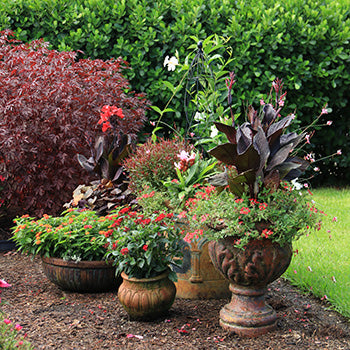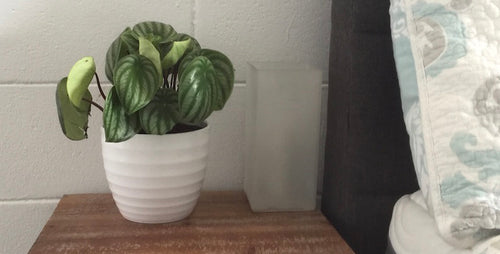by Justin Hancock Winter can be the most
challenging time of the year to grow houseplants. Light levels are typically at their lowest; the days are short
anyway; running the furnace sucks the relative humidity (that plants love right out of the air); and if your holiday
schedule is anything like mine, houseplants are easy to overlook.

Happily, even during winter the right
houseplants are easy to grow and decorate your home with. The first, and probably most important thing to keep in
mind is that you should match plants to your conditions, just like you would your clothes (for example, you wouldn’t
wear a tank top outdoors in a blizzard and you wouldn’t wear a parka on a sultry summer day).
Low-Care Plants
If you’re likely to get distracted from watering your plants regularly – or you’re not home frequently enough to water them -- then the easiest-care plants are your best bets. They can last through longer periods without water than most other houseplants, especially in low-light conditions. Some of my favorites are:
Vacation Care
If you travel for the holidays and will be gone for more than a week, set your plants in the bathtub, water them heavily, and keep them all together in that more humid environment until you return. This trick has saved my plants on more than one occasion.
Brown Leaf Tips or Edges
If you see the leaf edges or tips on your houseplants (especially those that appreciate a bit of moisture, such as peace lily and dieffenbachia), the problem in winter is probably low humidity. There are a couple of easy ways to remedy this:
- Place a small humidifier near your plants
- Cluster your plants together (they release moisture into the air as they breathe)
- Place the plant on a tray of pebbles and water (the top of the pot should sit on the pebbles, above the water)
Watering
Wondering about watering? You’re not alone! This is a really common question. One fab rule of thumb is to water your
plants when the top inch of the soil has dried out. It’s really easy to check this – just stick your finger in the
potting mix as you’re walking by.
By the way: If you don’t like the idea of sticking your finger in the
pot, there are also moisture meters you can buy that tell you when the soil gets dry.
Fertilizing
The good news is that most houseplants don’t need any fertilizer during winter. They grow a lot more slowly, and because of that, don’t really need the extra nutrients until the days start to get longer in spring. (I typically begin fertilizing again in early March.)
Repotting
More good news! Because most houseplants don’t put on much growth in winter, they’re not likely to get too rootbound. If they are, repotting in spring will help give them an extra boost.
Houseplant Questions?We love to talk to other gardeners. Email us your houseplant questions and I or one of our other gardening experts will get back to you!
















